 |
 |
 |
| |
Frailty Predicts Fractures Among HIV-infected and Uninfected Women:
Results from the Women's Interagency HIV Study
|
| |
| |
Reported by Jules Levin
9th Annual Aging and HIV Workshop
New York, Sept 13-14 2018
From Jules: frailty among HIV+ women in WIHS increased by almost double the risk for fracture. Ever opiate or cocaine use was also associated with increased risk. Feelings of exhaustion increased feature risk, so did reduced grip strength, and unintentional weight loss which might be reflective of declining health & exhaustion. Being Black or latino increased risk compared to whites, so did current smoking. One questioner asked if frailty among HIV+ men increased fracture risk and the response by Dr Sharma was probably, and yes of course I agree its likely many of these risk factors here apply to men as well, and frailty increases fall and fracture risk. Bone mineral density has been found to decline more quickly in HIV+ women vs HIV+ men. Of note you will see in graph below that after age 50 fracture rates increase a lot more quickly among HIV+ men & women than for HIV- showing the greater fracture risk older aging HIV+ face. New fractures in HIV+ women is greater in WIHS compared with HIV-, see graph below. Fractures incidence is also higher in MACS HIV+ men vs HIV- and also appears to increase more quickly after age 50, see graph below. A question for HIV is if recovery after fracture in older HIV+ is much more difficult than for HIV-, this remains unresearched and unanswered. It is one of the questions, more patient focused type of research in aging & HIV we need.
Anjali Sharma, MD, MS; Qiuhu Shi, MS, PhD; Donald R. Hoover, PhD; Phyllis C. Tien, MD; Michael W. Plankey, PhD; Mardge H. Cohen, MD; Elizabeth T. Golub, PhD; Deborah Gustafson, PhD; Michael T. Yin, MD
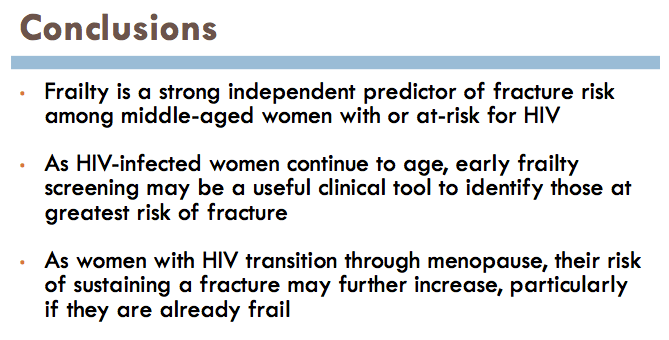
PROGRAM ABSTRACT
Background: Frailty is associated with numerous adverse outcomes among elderly HIV-uninfected persons, including falls, fractures, disability, and death. However the relationship between frailty and fracture risk in middle-aged HIV-infected women is unknown.
Material & Methods: Prospective longitudinal cohort study of 1332 HIV-infected and 532 uninfected women. We evaluated associations between baseline frailty status (defined as ≥3 of 5 Fried Frailty Index components: slow gait, reduced grip strength, exhaustion, unintentional weight loss, and low physical activity) and frailty components, with first and second incident fractures. Cox proportional hazards models determined predictors of time to first and second fracture; similar models evaluated frailty components.
Results: HIV-infected women were older (42 vs. 39 yr, p<0.0001) and more often frail (14% vs. 8%, p=0.04) than uninfected women; median follow-up was 10.6 years. Frailty was independently associated with time to first fracture in all women [adjusted hazard ratio, (aHR) 1.71, 95%CI: 1.30-2.26; p=0.0001], and among HIV-infected women only - doubles risk - (aHR 1.91, 95%CI: 1.41-2.58; p<0.0001), as well as with time from first to second fracture among HIV-infected women only (aHR 1.92, 95% CI: 1.18 - 3.12; p=0.0091). HIV infection was independently associated with time to first fracture (aHR1.32, 95% CI: 1.02 - 1.70, p=0.035), but not with time to second fracture.
In analyses of frailty components, exhaustion (aHR 1.60, 95%CI: 1.26-2.04, p=0.0001), unintentional weight loss (aHR 1.44, 95%CI: 1.06-1.94, p=0.019), and reduced grip strength (aHR 1.35, 95%CI: 1.06-1.72, p=0.017), were independently associated with time to first fracture in all women, as well as among HIV-infected women only [exhaustion (aHR 1.57, 95%CI: 1.20-2.07, p=0.0012), unintentional weight loss (aHR 1.44, 95%CI: 1.03-2.01, p=0.032), and reduced grip strength (aHR 1.36, 95%CI: 1.03 - 1.79, p=0.028)]. Only exhaustion was associated with time from first to second fracture in all women (aHR 1.98, 95% CI: 1.34-2.93, p=0.0007), and among HIV-infected women only (aHR 2.19, 95%CI =1.35 - 3.46, p=0.0013). HIV status was not significantly associated with time to fracture in models containing frailty components.
Conclusions: Frailty is a strong independent predictor of fracture risk among middle-aged women with or at-risk for HIV. As HIV-infected women continue to age, early frailty screening may be a useful clinical tool to identify those at greatest risk of fracture.
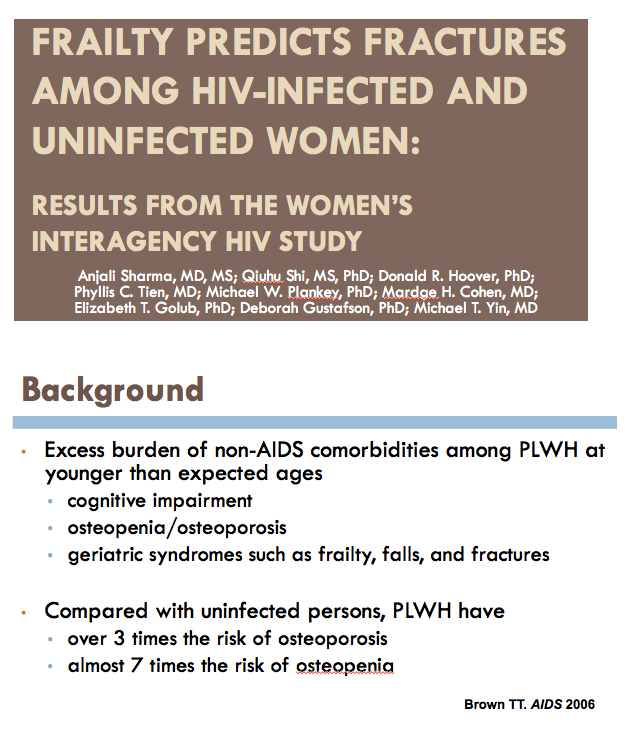
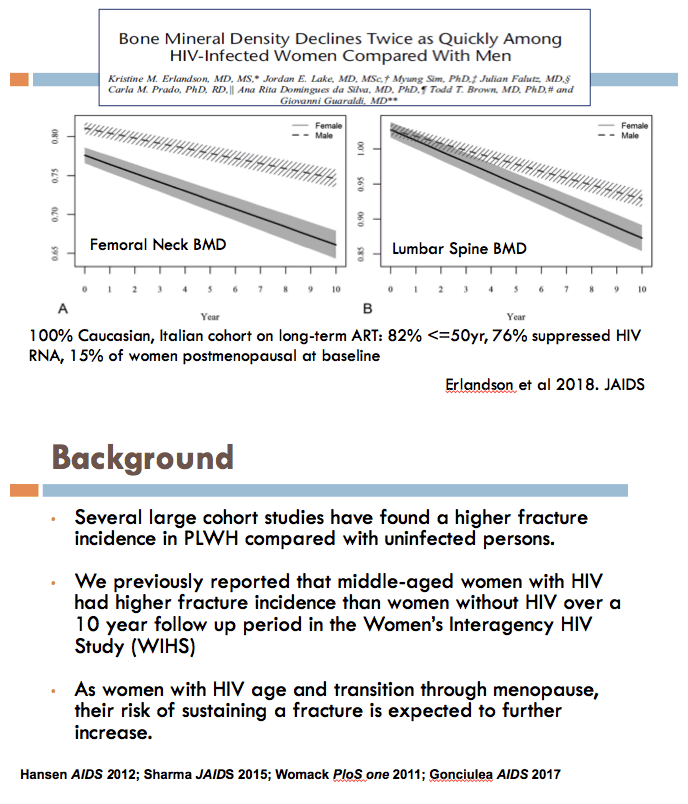
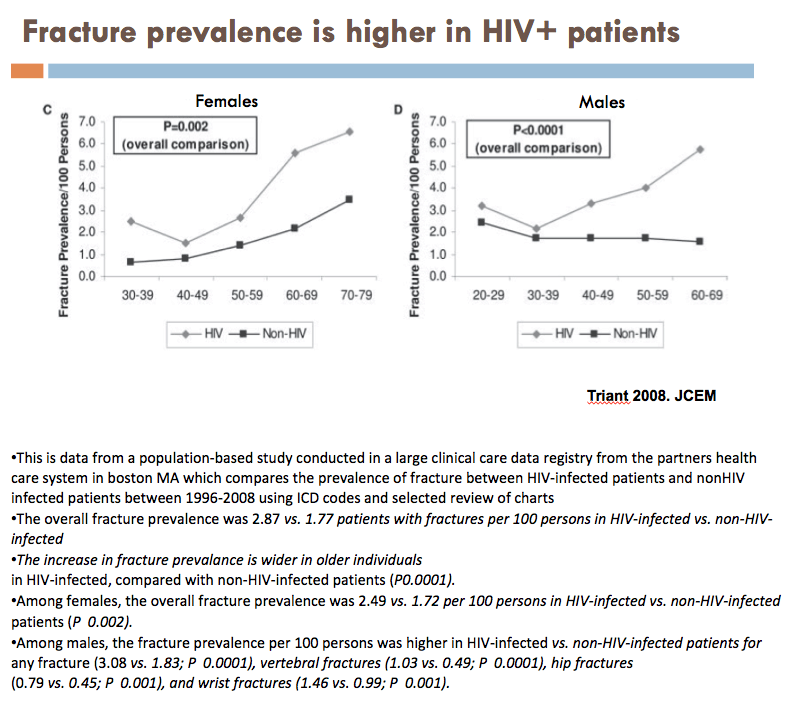
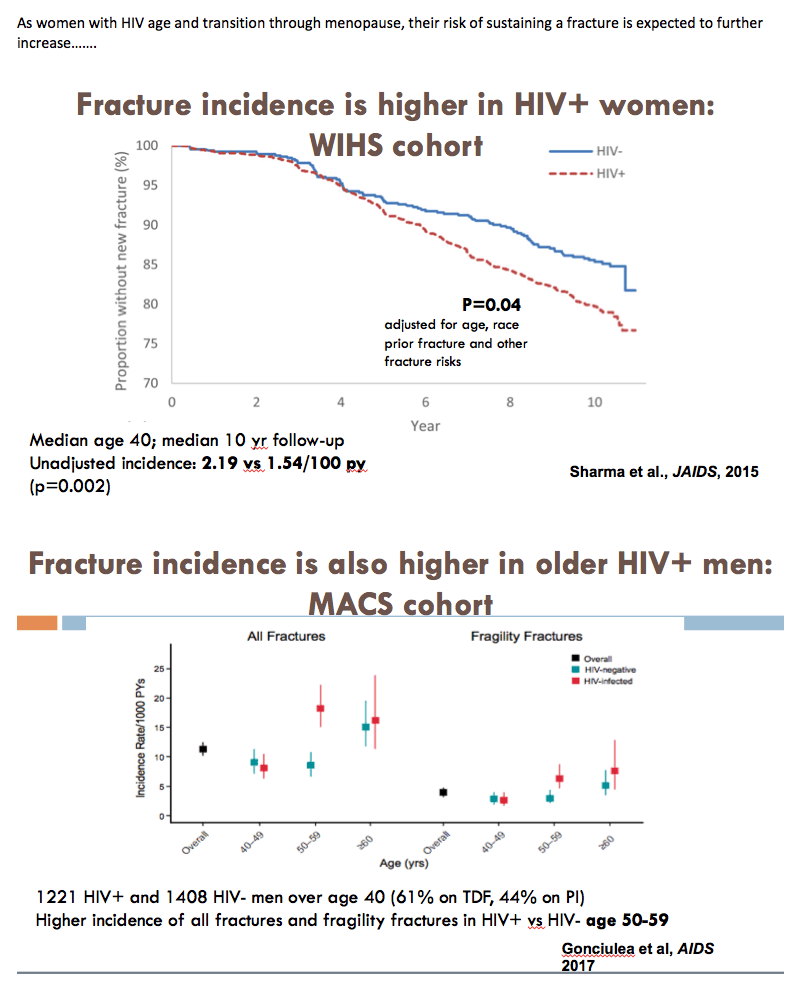
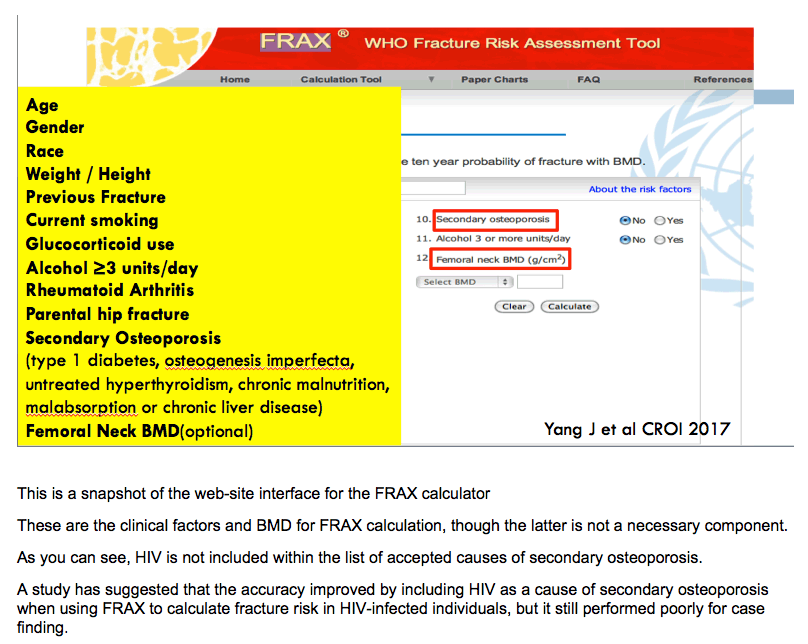
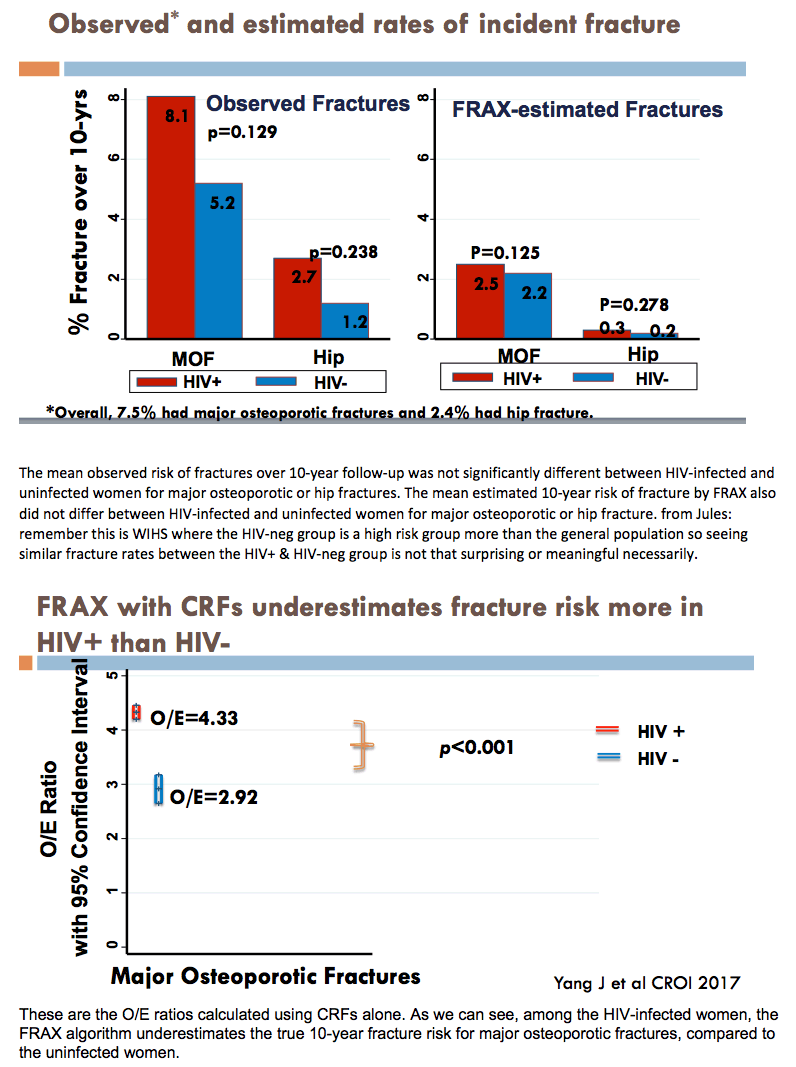
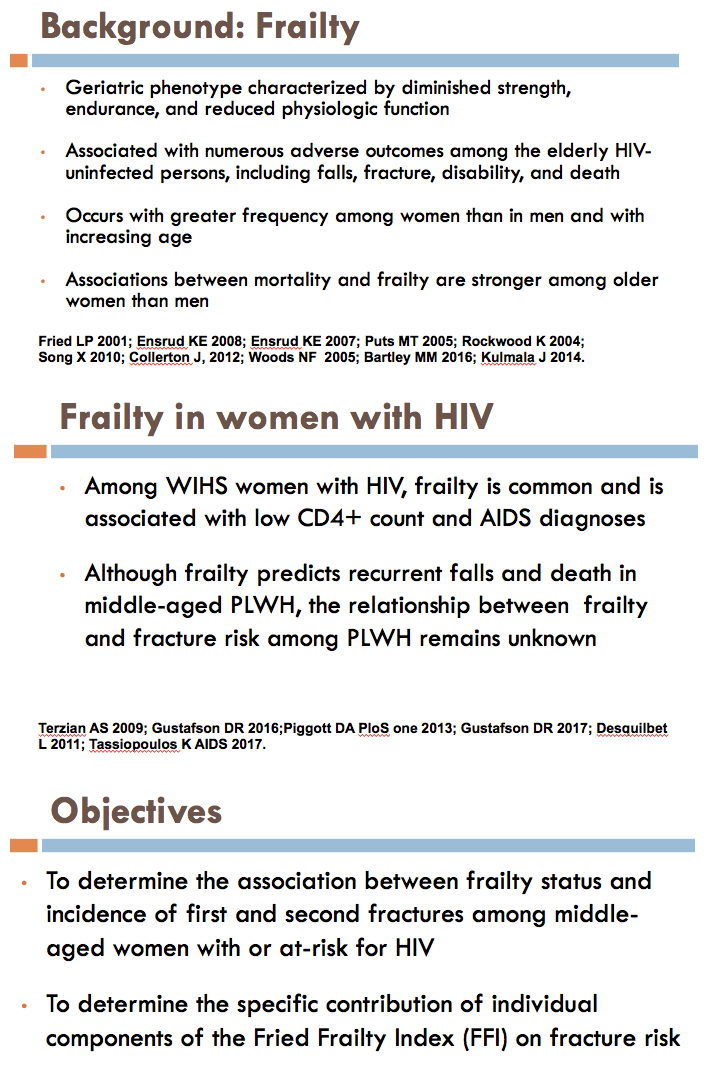
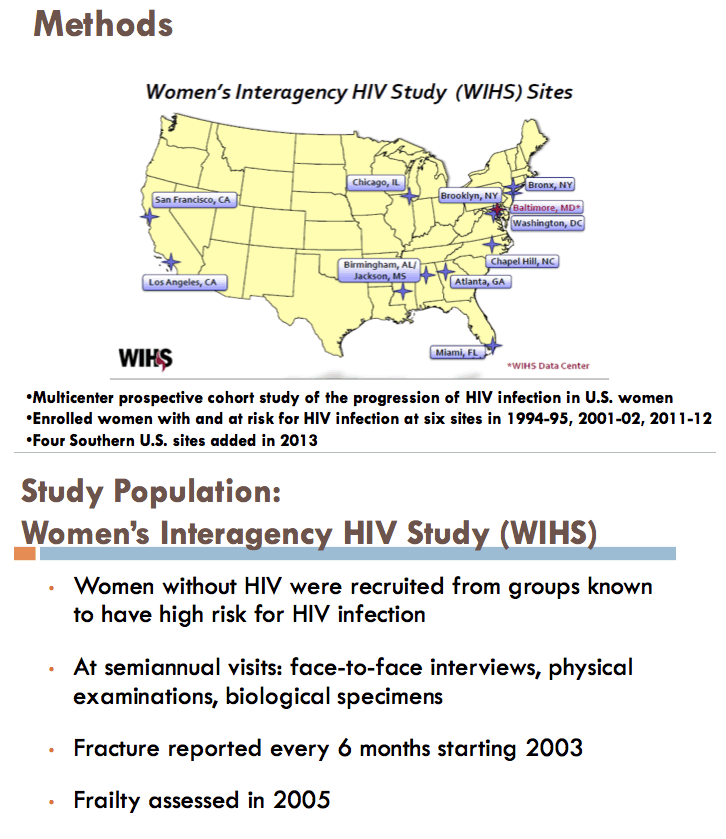
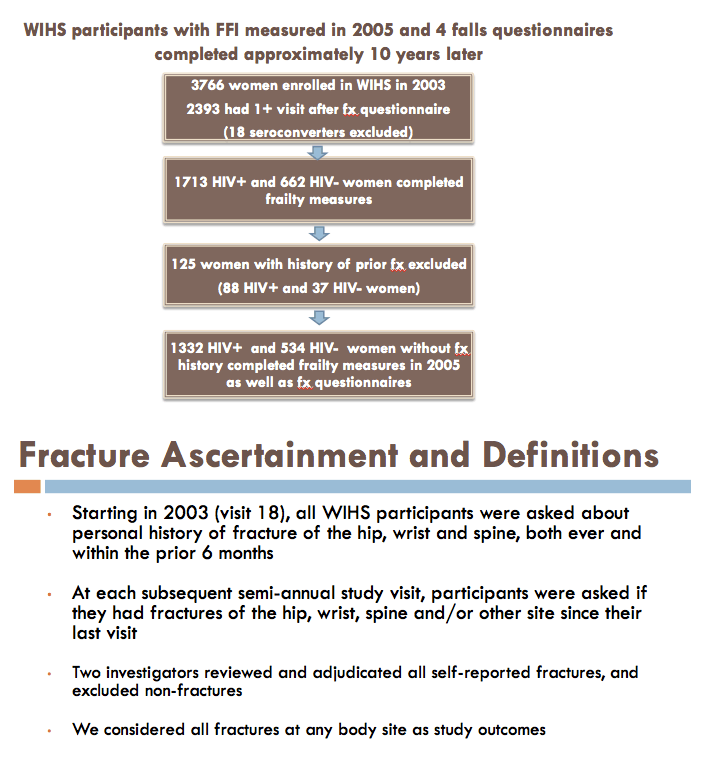
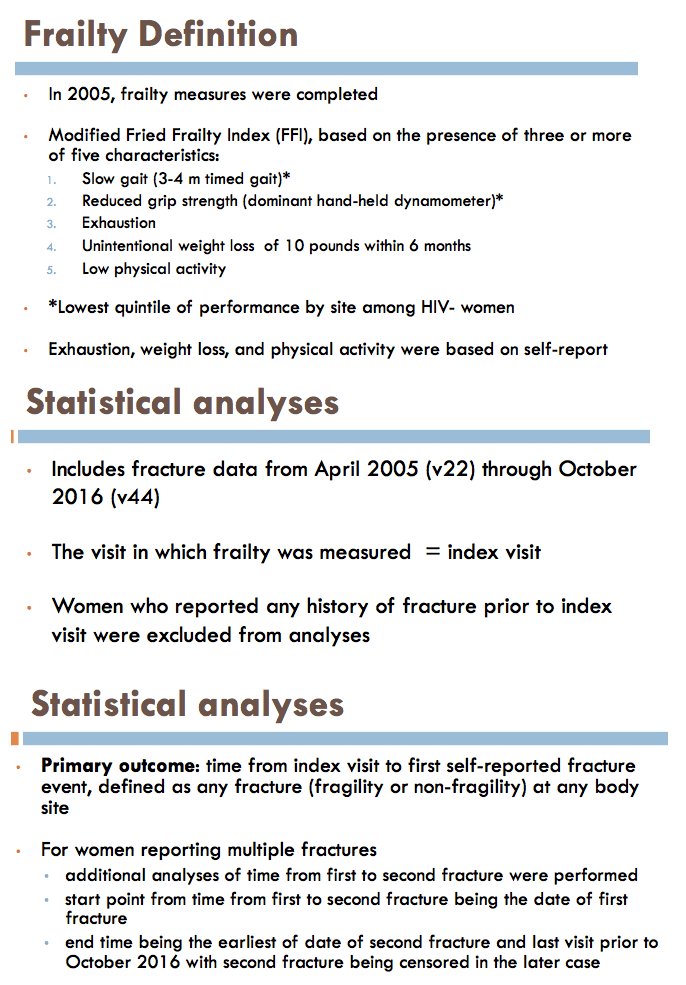
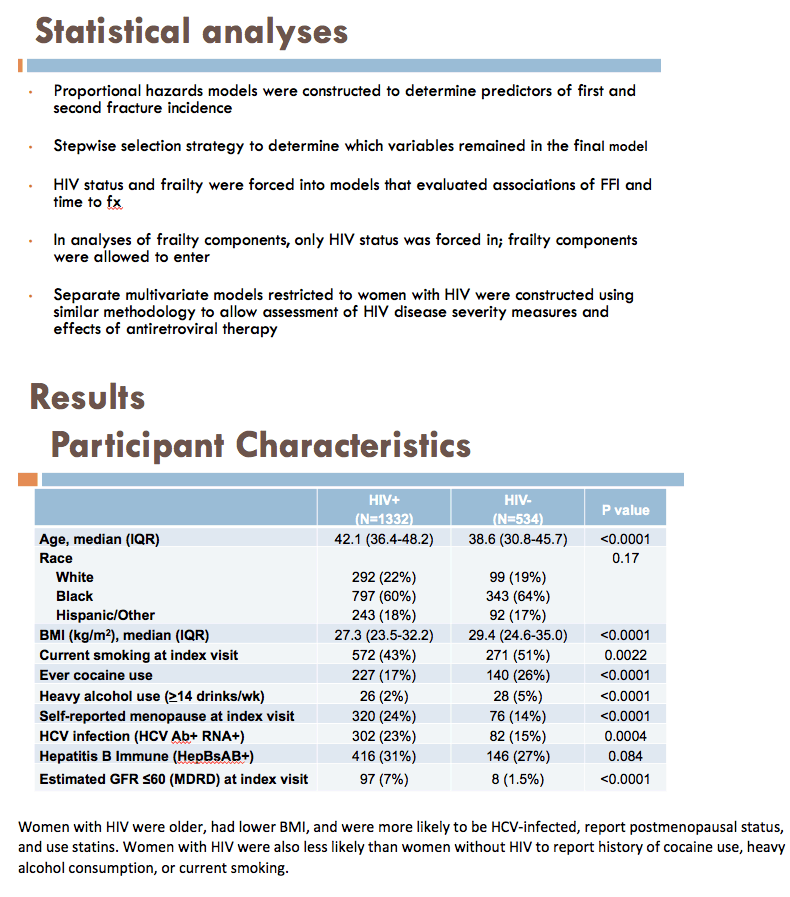
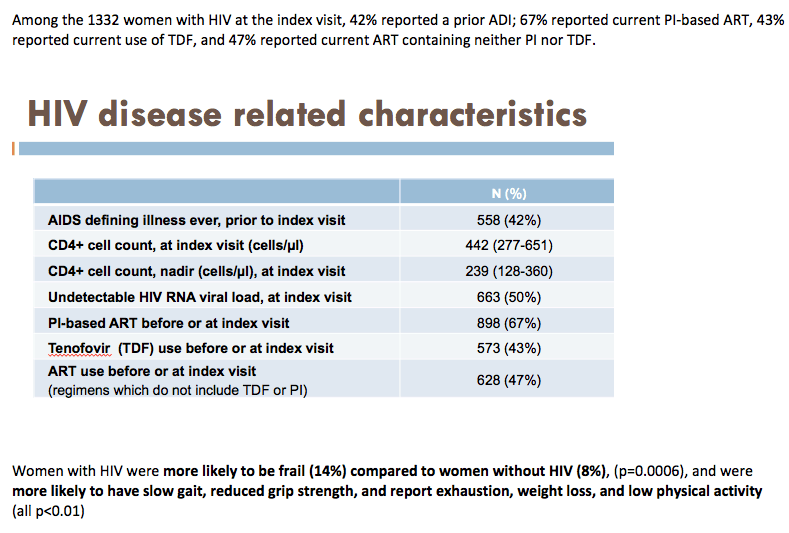
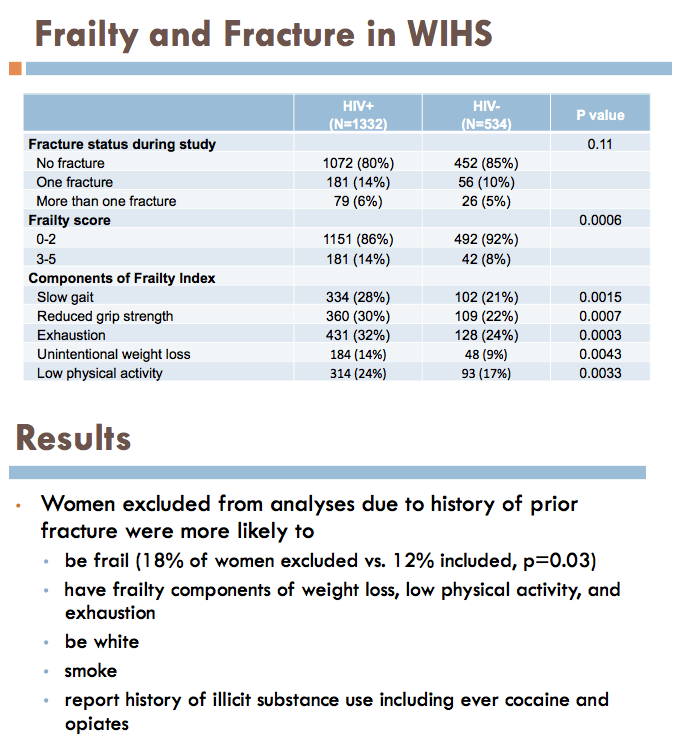
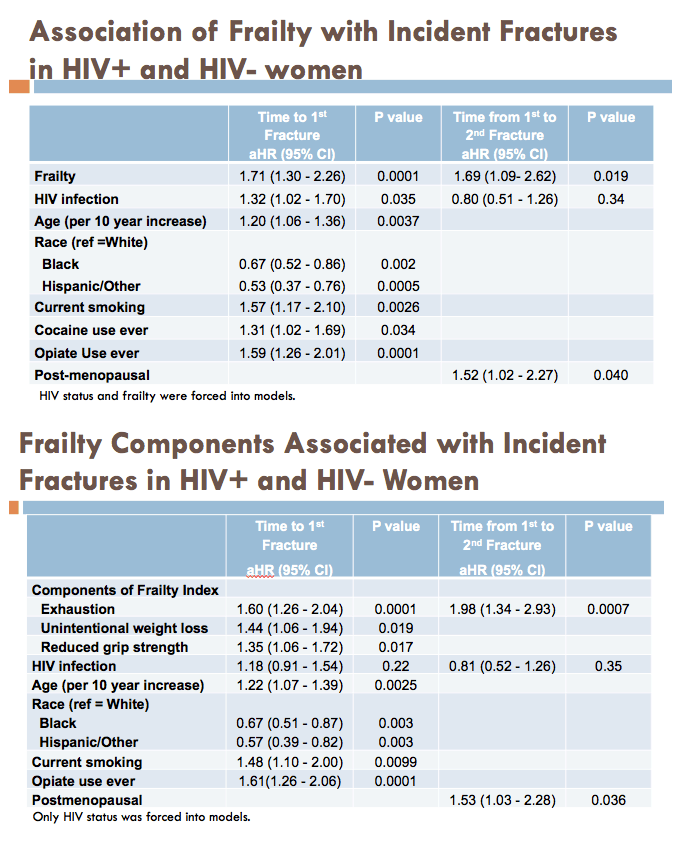
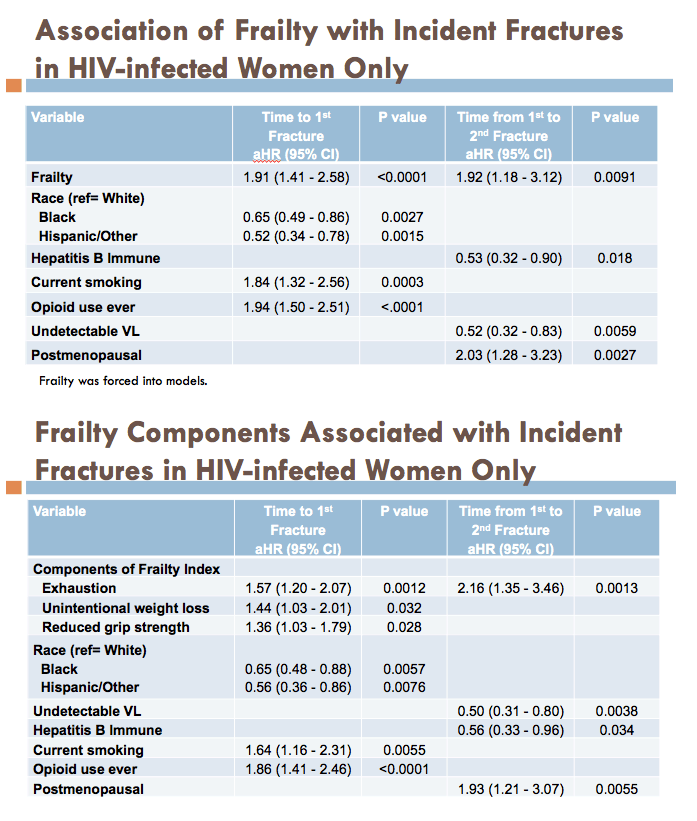
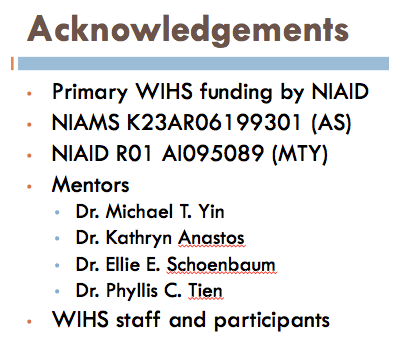
|
| |
|
 |
 |
|
|